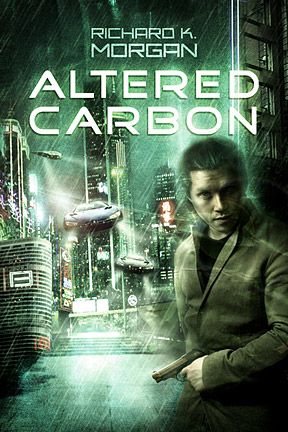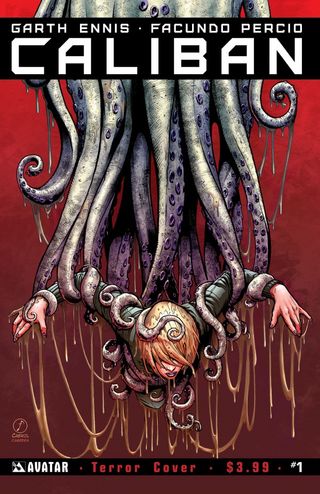If you like SOMA, you’ll also like…

Part of what makes 2015’s SOMA so memorable is the way it functions on multiple levels. It’s a survival horror game, where you advance the story by repeatedly out-stealthing a succession of strange and threatening obstacles. And with its backdrop of a dying underwater research station, it’s a game about atmosphere, where details stack up to tell a story driven in large measure by the environment itself.
But SOMA is also a game of ideas. The creeping, biotech monsters and threatening isolation elevate the emotional stakes in a way that leaves you open for new ways of seeing yourself, the world, and human potential. And for my money, SOMA’s climax is one of the most haunting and well-crafted game moments in recent memory.
In this edition of ‘If you like…’ I pulled together films, comics, and a novel that speak to the fusion of technology and humanity, and all the absurdity, danger, and potential that’s implied by such a collision.
Source Code, directed by Duncan Jones
SOMA is at its most effective when your experience and understanding of its submerged vision of Earth is slowly revealed to you. With each clue discovered, a piece of the mystery comes into focus. It’s storytelling by subtraction, in that all the barriers to understanding the original premise are gradually removed. As in SOMA, Duncan Jones’s excellent 2011 film gives a lot away right from the beginning, if only you know what to look for.
After his fantastic feature-film debut with Moon, in Source Code Jones again returns to concepts of ethically-questionable technology, consciousness, and the nature of identity. As you can see in the spoiler-heavy official trailer above, film-lead Jake Gyllenhaal wakes up disoriented on a Chicago-bound train. Why he is there, who he actually is, and even his place in time are unclear. The film does a great job of teasing the audience with enough information to keep it engaged while at the same time keeping a few secrets in reserve to sustain the movie’s punchy narrative momentum towards its moving conclusion.
Altered Carbon, by Richard Morgan

Richard Morgan’s debut novel is a book that’s more than a little pleased with its interpretation of hard-boiled, cyberpunk noir. But his writing and characters are so well executed that you find yourself ignoring the well-worn ideas and paying more attention to the absolutely stunning level of detail that Morgan has built into the novel.
The novel’s central character is Takeshi Kovacs, a brutal and dangerous man with a past but also an understanding of human beings that runs a bit deeper than you would first suspect. This is a universe, after all, where people scan and back-up their consciousnesses to be reinserted into different bodies in order to extend life. It’s an ambitious, if uneven, novel—but one that takes seriously some of the most challenging and thought-provoking assumptions about transhumanism.
PC Gamer Newsletter
Sign up to get the best content of the week, and great gaming deals, as picked by the editors.
World of Tomorrow, directed by Don Hertzfeldt
This unusual and poignant animated short film by Don Hertzfeldt presents an argument about the potential future of humanity that meshes nicely with many of themes that surface in SOMA. Will technology be the savior of mankind? And if a transhuman future does await us all, how much of our humanity will actually remain recognizable to our future selves?
Using a distinctive, often flat, animation style and idiosyncratic voice acting, Hertzfeldt interrogates notions of time travel, inter-generational communication, and immortality. It’s been compared in more than a few places to La Jetée, the genre-defining 1962 film by Chris Marker that inspired 12 Monkeys. And Hertzfeldt’s remarkable, 16-minute movie rewards repeated viewings, if only to better absorb its final argument about the meaning of an intersection between man and machine.
Caliban, written by Garth Ennis, art by Facundo Percio

Although it at first appears to be treading some familiar survival-horror ground, in the hands of Garth Ennis, Caliban works as a textured, gruesome, and finely-written example of the genre. In its original seven-issue run in 2014, the series begins by introducing us to the spaceship Caliban, deep into its long and tedious mission delivering hibernating miners to a distant world. Naturally something goes horribly wrong, and the remaining crew must find a way to overcome an obstacle no one could have predicted. It’s a story arc we’ve experienced many times before, but as with SOMA, it’s the details and atmosphere that set it apart.
Ennis’s writing is tight, focused, and controlled in his characterizations of a crew pushed to the edge of stress and beyond. It’s a given there won’t be any easy answers, but the comic’s true value comes in just being there to bear witness to the attempted resistance of these people. Percio’s art works well at delivering memorable character beats, grotesque death scenes, and a working spacecraft that has managed to keep the lights on amid disaster. The Caliban is a bright—but still scary—prison. The complete series is available through digital download here.
Patrick currently works as web editor for Hinterland Studios, which is making The Long Dark. For more installments of ‘If you like...’, check out his recommendations for Dead Space, The Witcher, Dishonored, Mass Effect, Skyrim, Fallout 3, Deus Ex, Company of Heroes and STALKER fans.
